The Use of Acoustic Emission Elastic Waves for Diagnosing High Pressure Mud Pumps Used on Drilling Rigs
Abstract
:1. Introduction
- Independence of the environment in which the measurement takes place;
- Higher sensitivity to the detection of damage (before an external symptom is visible), compared to traditional measurements (vibrations, pressures, temperature, etc.);
- Applicability for most machines, regardless of their technical condition;
- Ability to identify the AE signal source location in the tested object.
2. An Analysis of Drillship Mud Pump Failures
3. Analysis of Typical Failures of Mud Pumps in the “Power End” and “Fluid End”
4. Most Frequent External Factors Causing Mud Pumps Failures
5. Application of Acoustic Emission for Mud Pump Diagnostics
6. The Experiment and the Results
- ➢
- local deformation hysteresis and discrete ‘memory’ of the material,
- ➢
- downward shift of the frequency resonance band, in proportion to the resonance amplitude, contrary to the classical case, where the shift is proportional to the squared amplitude,
- ➢
- square dependence of the third harmonic amplitude, whereas using the classical theory of non-linearity this dependence should be raised to the third power,
- ➢
- the level of attenuation depends on the amplitude,
- ➢
- the phenomenon of ‘slow dynamics’, i.e., slow recovery of linear properties after the material was subjected to the impact leading to non-linearity.
7. Conclusions
Author Contributions
Funding
Conflicts of Interest
References
- Deng, S.; Pei, J.; Wang, Y.; Liu, B. Research on drilling mud pump fault diagnosis based on fusion of acoustic emission and vibration technology. Insight Non-Destr. Test. Cond. Monit. 2017, 59, 415–423. [Google Scholar] [CrossRef]
- Hu, D.; Sun, Y.; Fu, J.; Li, J.; Zhang, E. Mud Pump System Fault Tree Analysis. In Proceedings of the 2014 Fourth International Conference on Instrumentation and Measurement, Computer, Communication and Control, Harbin, China, 18–20 September 2014. [Google Scholar]
- Deng, S.; Pei, J.; Wang, Y.; Lin, B. Research on fault diagnosis of mud pump fluid end based on acoustic emission. Adv. Mech. Eng. 2017, 9, 1–10. [Google Scholar] [CrossRef]
- Bejger, A.; Piasecki, T. Technical problems of mud pumps on ultra-deepwater drilling rigs. Sci. J. Marit. Univ. Szczec. 2013, 36, 13–17. [Google Scholar]
- Romagnoli, R.; Bosio, E. Evolution of the Drilling mud Pumping systems: Related safety standards and actual risk analysis upgrades in offshore. In Proceedings of the International offshore and polar engineering conference, Honolulu, HI, USA, 25–30 May 2003. [Google Scholar]
- Piasecki, T.; Bejger, A. The assessment of the operational suitability of mud pumps on deep water drillships depends on maintenance strategy. Sci. J. Marit. Univ. Szczec. 2016, 46, 49–53. [Google Scholar]
- Piasecki, T.; Bejger, A.; Lijewski, S. Problemy eksploatacyjne wysokociśnieniowych pomp płuczkowych stosowanych na statkach wiertniczych. Zeszyty Naukowe Akademii Morskiej w Gdyni 2014, 83, 203–210. (In Polish) [Google Scholar]
- Available online: https://seekingalpha.com/article/4273971-dayrate-and-utilization-trends-show-offshore-drilling-industry-clearly-improving-july-2019 (accessed on 5 January 2020).
- Available online: https://www.offshore-mag.com/rigs-vessels/article/14034933/offshore-drilling-rig-market-set-for-gradual-recovery (accessed on 3 January 2020).
- Acoustic Emission Standard Terminology ASTM E1316-05. Available online: https://www.astm.org/DATABASE.CART/HISTORICAL/E1316-05.html (accessed on 3 January 2020).
- Żółtkowski, B. Basic of Diagnostics of Machines; The University of ATR: Goszcz, Poland, 1996. [Google Scholar]
- Bejger, A. An analysis of chosen engine failures of the seismic research type ships. J. Pol. C. 2011, 6, 9–14. [Google Scholar]
- Bejger, A.; Drzewieniecki, J.B. The Use of Acoustic Emission to Diagnosis of Fuel Injection Pumps of Marine Diesel Engines. Energies 2019, 12, 4661. [Google Scholar] [CrossRef] [Green Version]
- Mobley, R. Maintenance Engineering Handbook, 7th ed.; The McGraw–Hill Companies: Milano, Italy, 2008; Available online: https://www.academia.edu/36703441/Maintenance_Engineering_Handbook_7th_Ed_Mc_GrawHill_2008_.pdf (accessed on 3 January 2020).
- Bejger, A.; Gawdzińska, K. Identification of structural defects of metal composite castings with the use of elastic waves. Arch. Metall. Mater. 2011, 56, 121–125. [Google Scholar] [CrossRef]
- Batko, W.; Dąbrowski, Z.; Kiciński, J. Zjawiska Nieliniowe w Diagnostyce Wibroakustycznej; Biblioteka Problemów Eksploatacji: Radom, UK, 2008. (In Polish) [Google Scholar]
- Weavers, M. Fundamentals of acoustic emission. In Proceedings of the 22nd European Conf. On AE Testing, Prague, Czech, 29–31 May 1996; Robert Gordon University: Aberdeen, UK, 2016; pp. 1–10. [Google Scholar]
- Bejger, A.; Chybowski, L.; Gawdzińska, K. Utilising elastic waves of acoustic emission to assess the condition of spray nozzles in a marine diesel engine. J. Mar. Eng. Technol. 2018, 17, 153–159. [Google Scholar] [CrossRef] [Green Version]
- A Reliable Acoustic EMISSION Based Technique for the Detection of a Small Leak in a Pipeline System. Energies 2019, 12, 1472. [CrossRef] [Green Version]
- Valve Leakage Detection in Industrial Pumps. Available online: www.sine.ni.com (accessed on 25 December 2019).
- Marhaug, A.; Barabadi, A.; Stagrum, E.; Karlsen, K.; Olsen, A.; Ayele, Y.Z. Criticality Analysis for Maintenance Purposes of Platform Supply Vessels in Remote Areas. J. Offshore Mech. Arct. Eng. 2017, 139, 031601. [Google Scholar] [CrossRef]
- Scalerandi, M.; Agostini, V.; Delsanto, P.P.; Van Den Abeele, K.; Johnson, P.A. Local interaction simulation approach to modeling nonclasical, nonlinear elastic behavior in solids. J. Acoust. Soc. Am. 2003, 116, 1–11. [Google Scholar]
- Holroyd, T. Machine & Systems Condition Monitoring Series; Acoustic Emission & Ultrasonics, Coxmoor Publishing Company’s: Oxford, UK, 2000. [Google Scholar]
- Wei, N.; Gu, J.X.; Gu, F.; Chen, Z.; Li, G.; Wang, T.; Ball, A.D. An Investigation into the Acoustic Emissions of Internal Combustion Engines with Modelling and Wavelet Package Analysis for Monitoring Lubrication Conditions. Energies 2019, 12, 640. [Google Scholar] [CrossRef] [Green Version]
- Puliafito, V.; Vergura, S.; Carpentieri, M. Fourier, Wavelet, and Hilbert-Huang Transforms for Studying Electrical Users in the Time and Frequency Domain. Energies 2017, 10, 188. [Google Scholar] [CrossRef] [Green Version]
- Zhang, Q.; Deng, W. An Adaptive Energy Management System for Electric Vehicles Based on Driving Cycle Identification and Wavelet Transform. Energies 2016, 9, 341. [Google Scholar] [CrossRef] [Green Version]
- Wavelet Toolbox For Use With Matlab. Available online: https://www.mathworks.com/help/matlab/ (accessed on 2 March 2020).

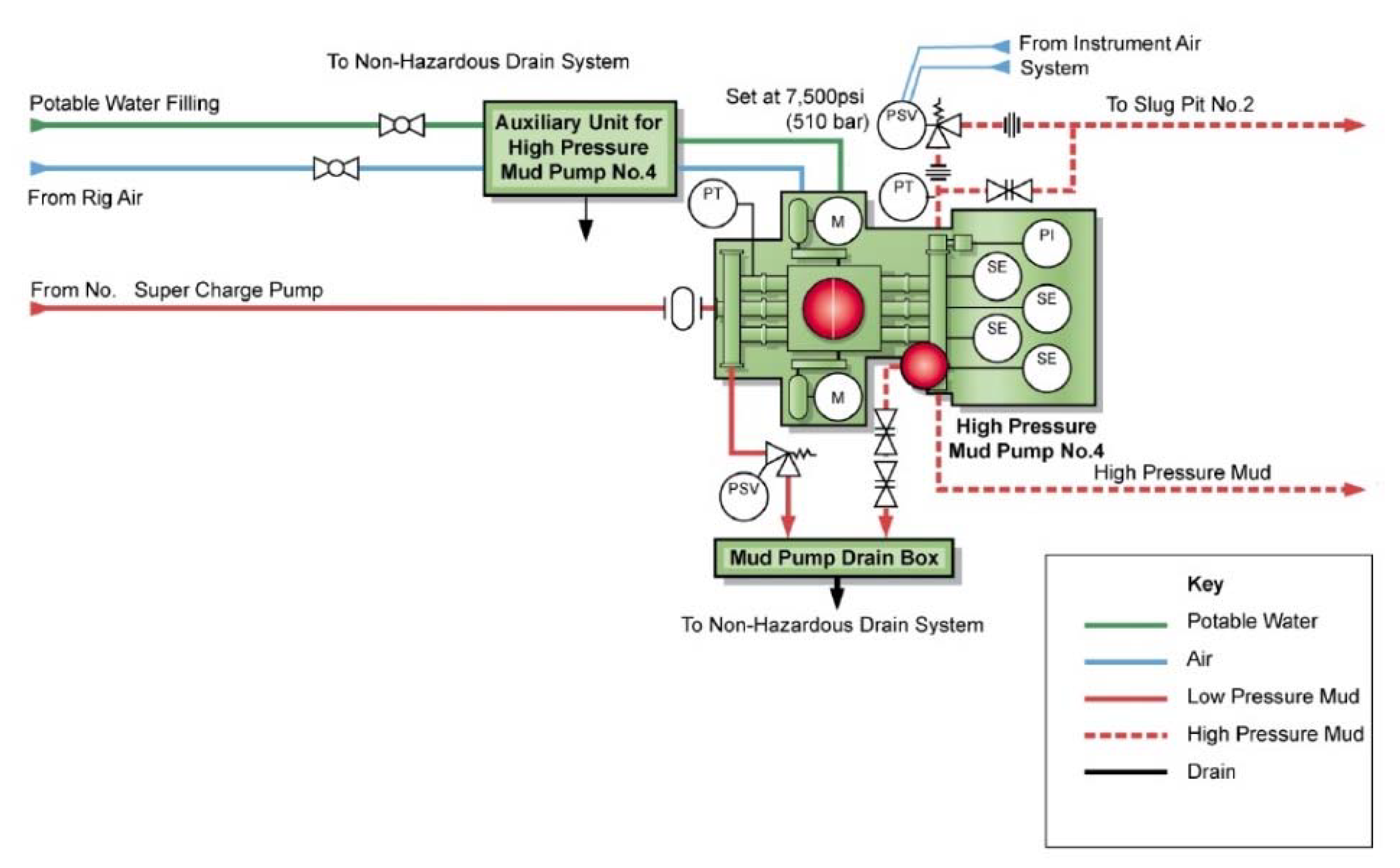
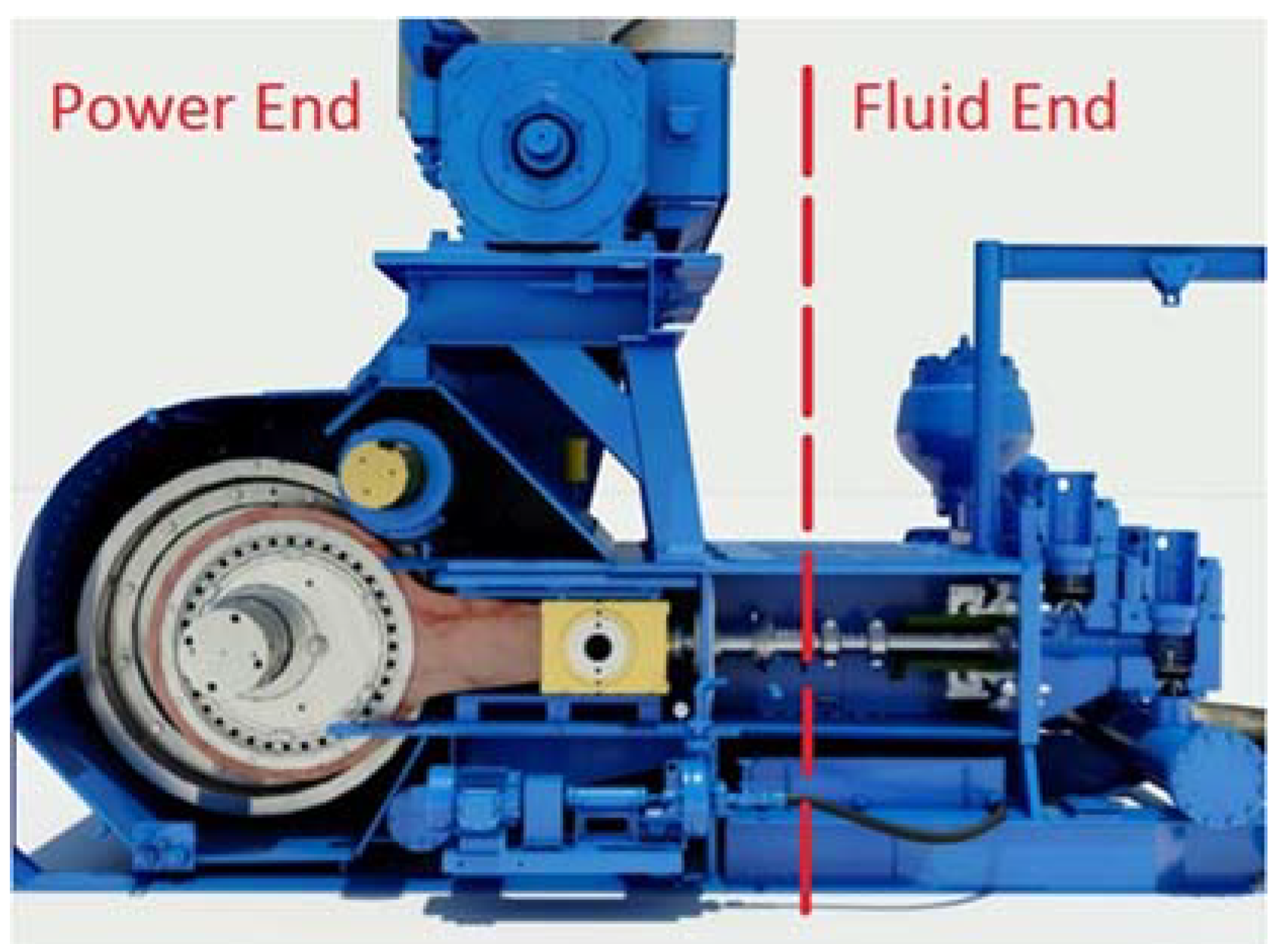

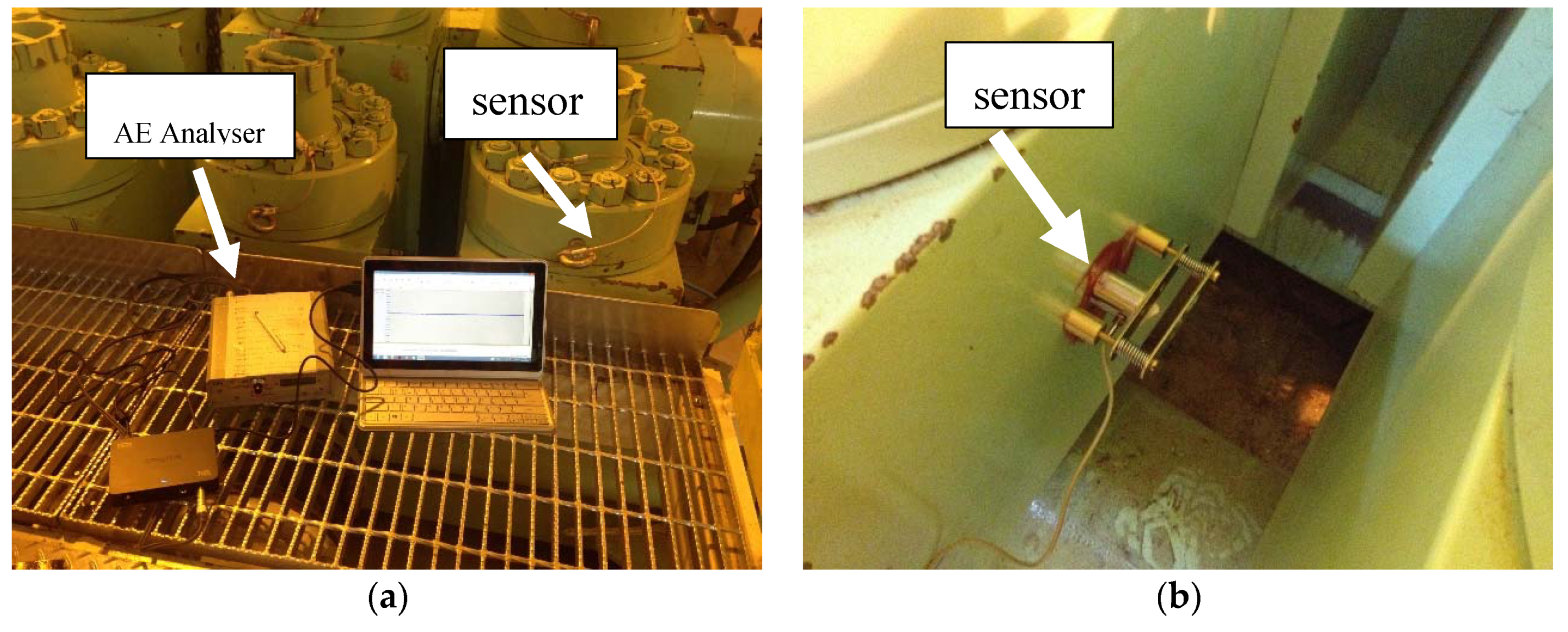
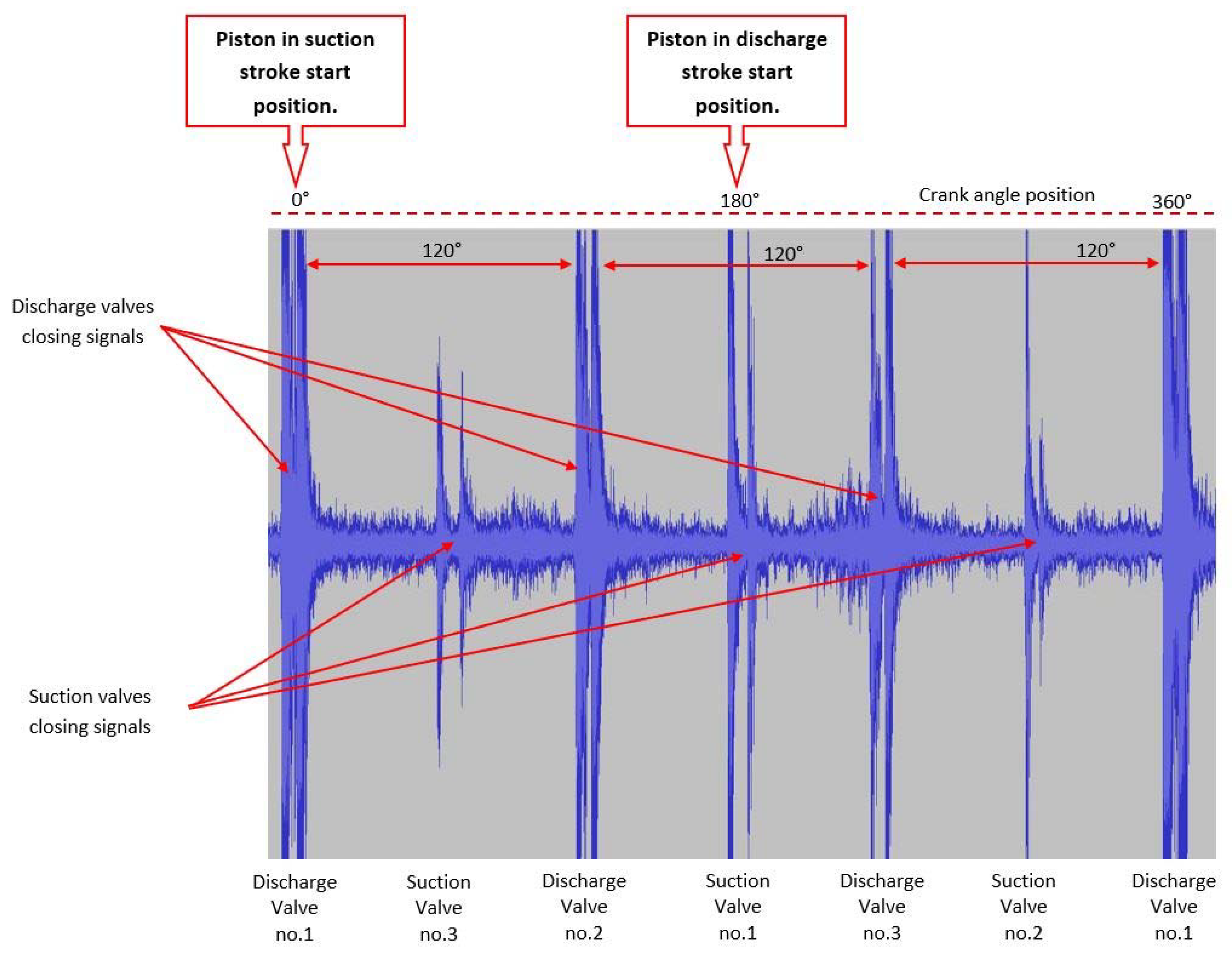
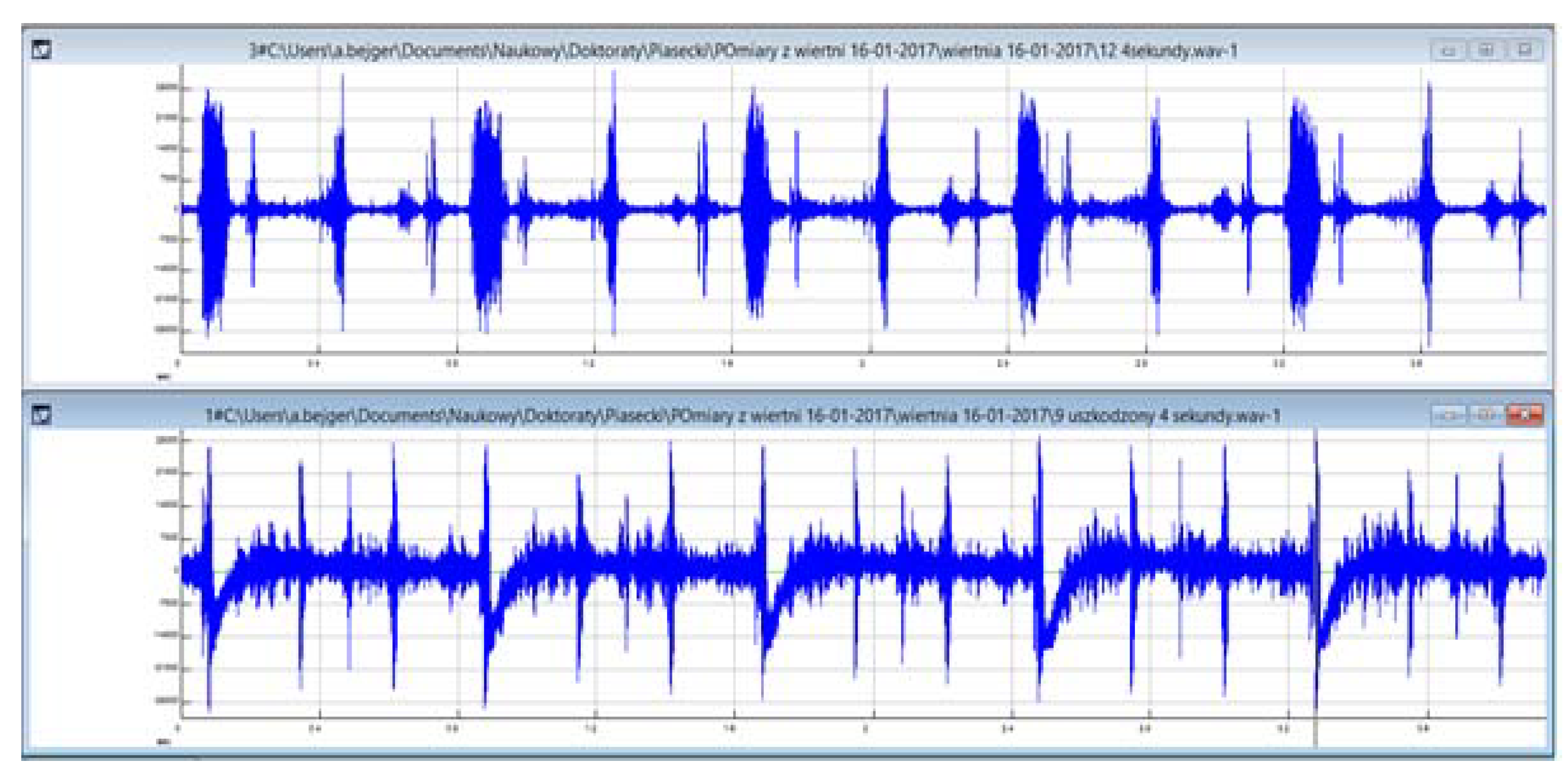
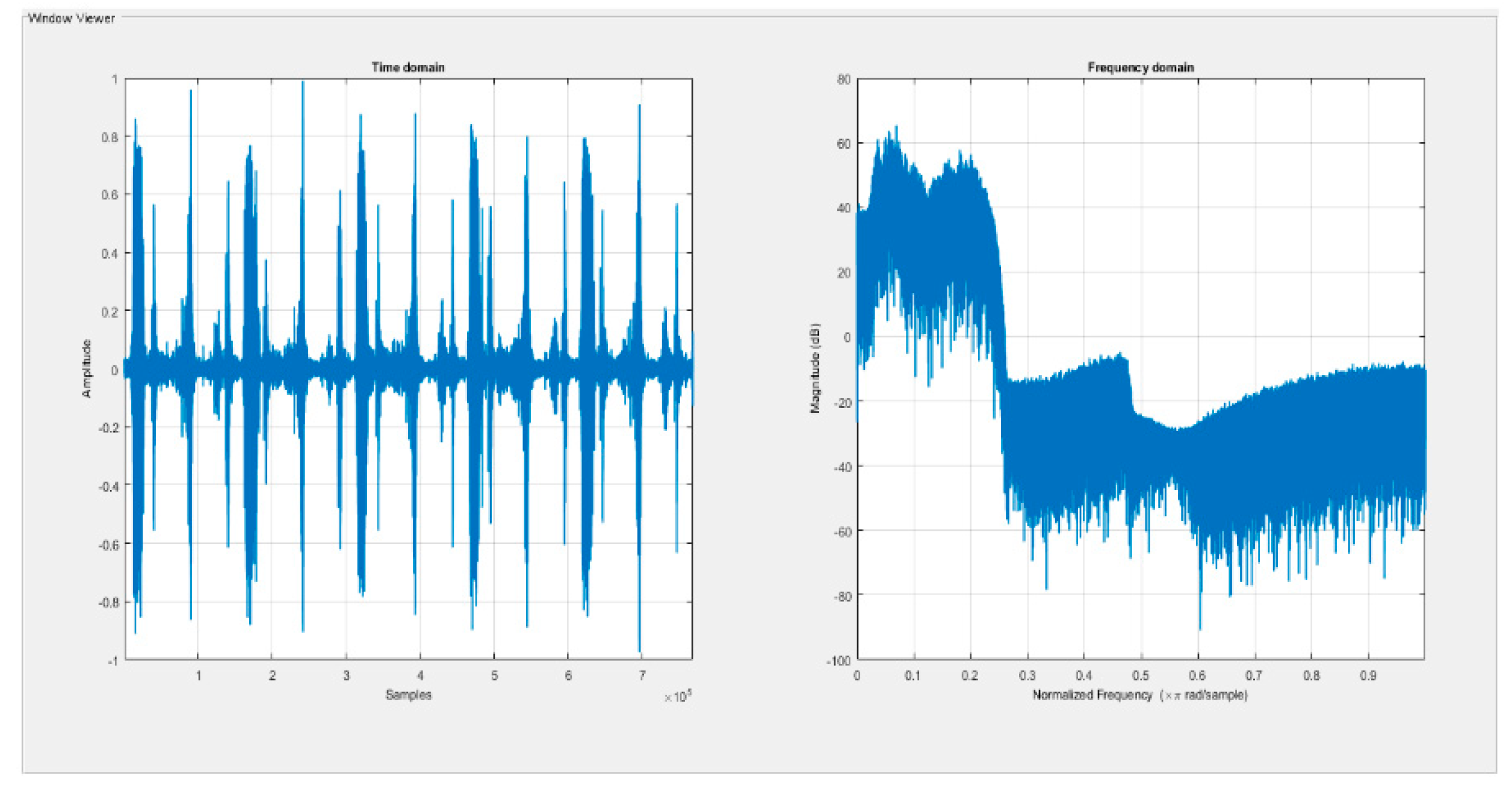
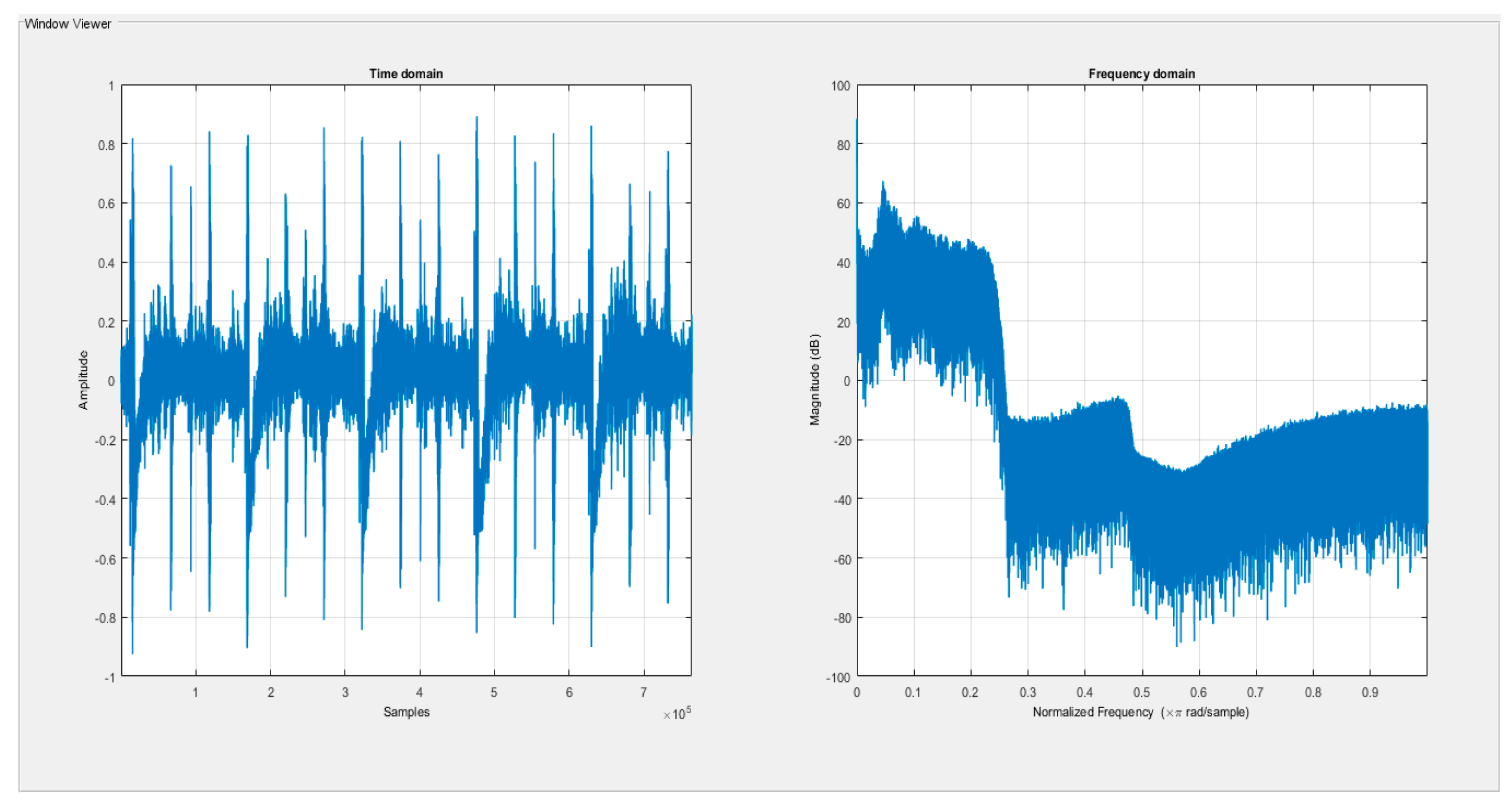
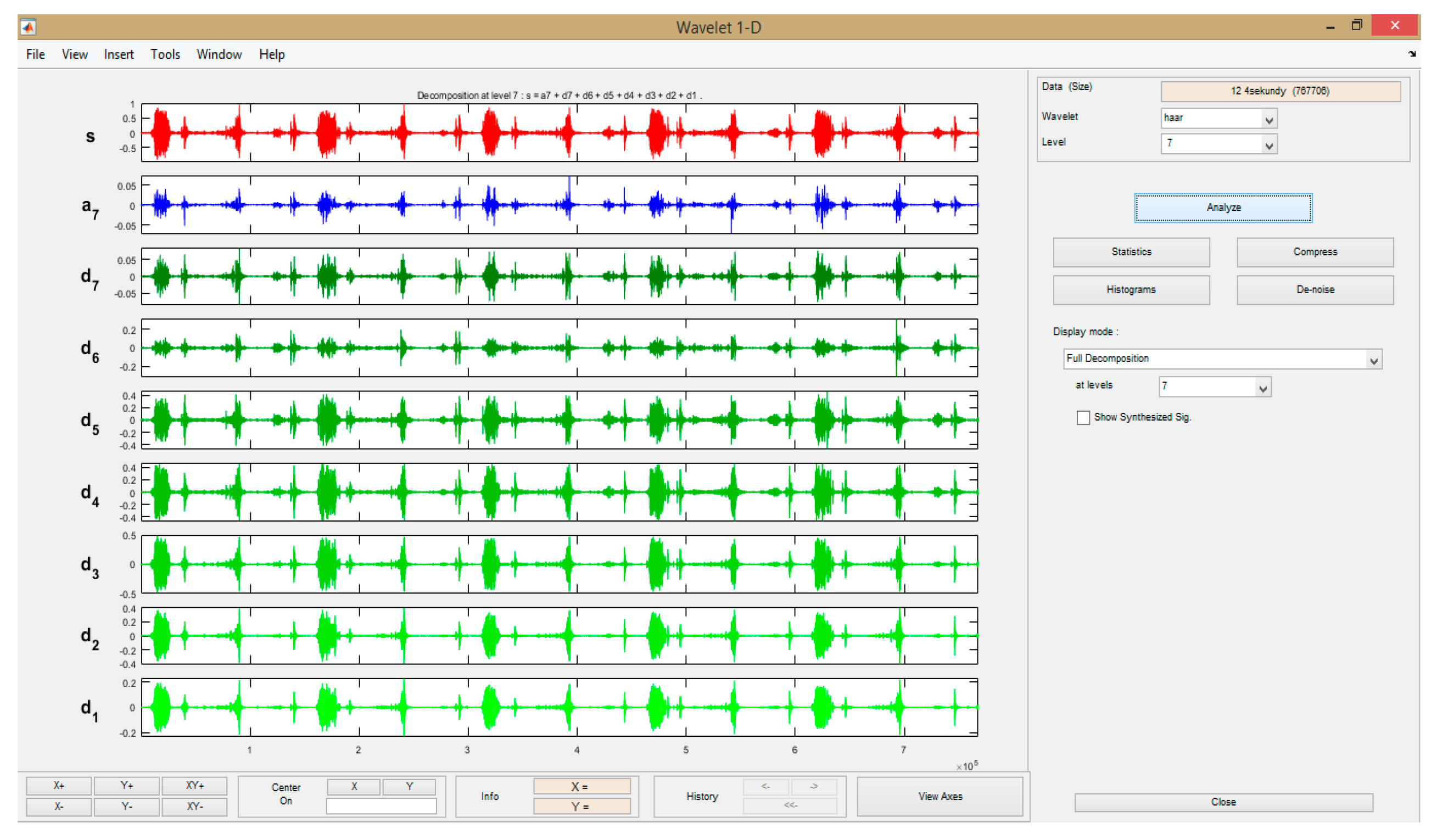
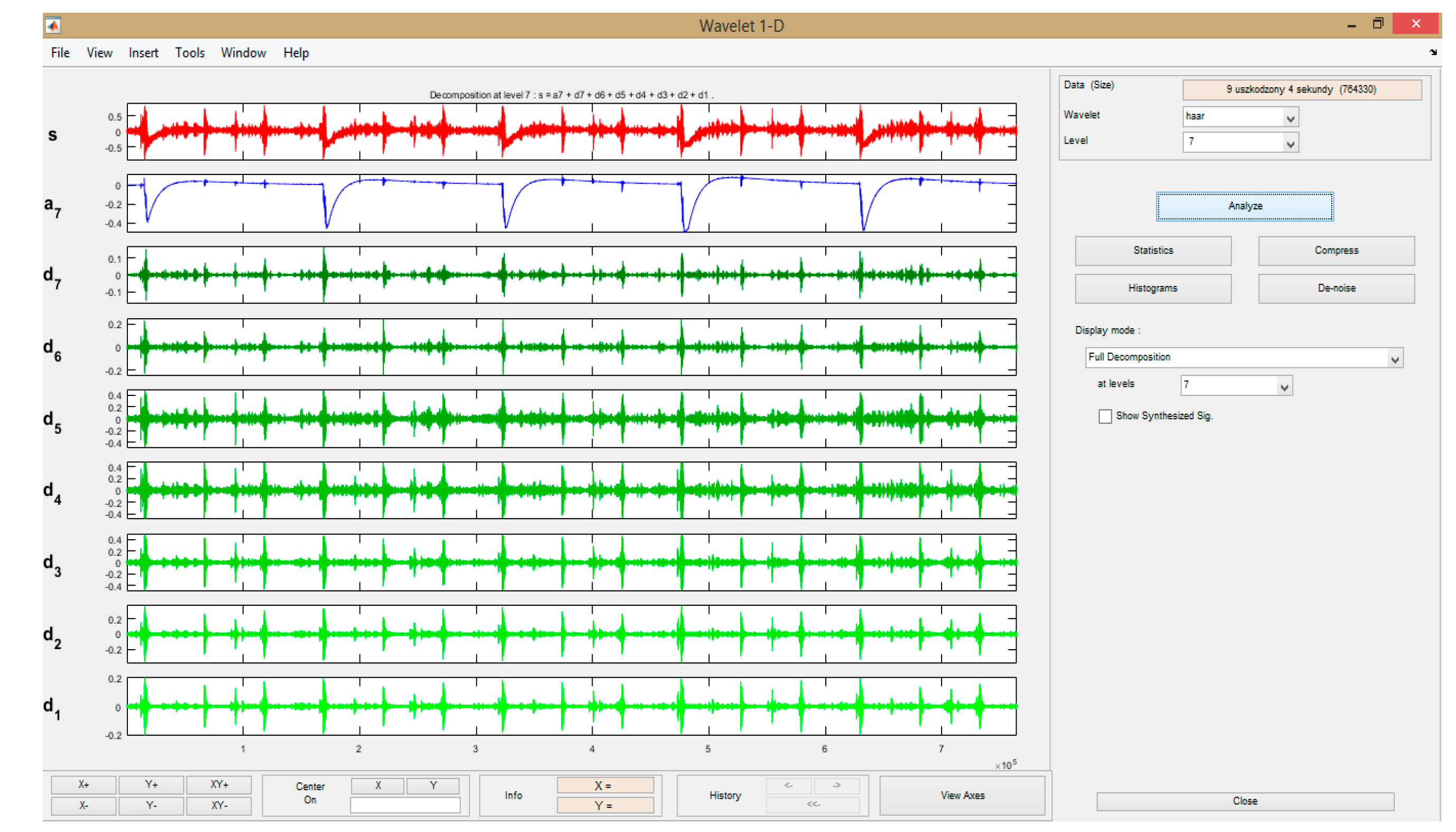

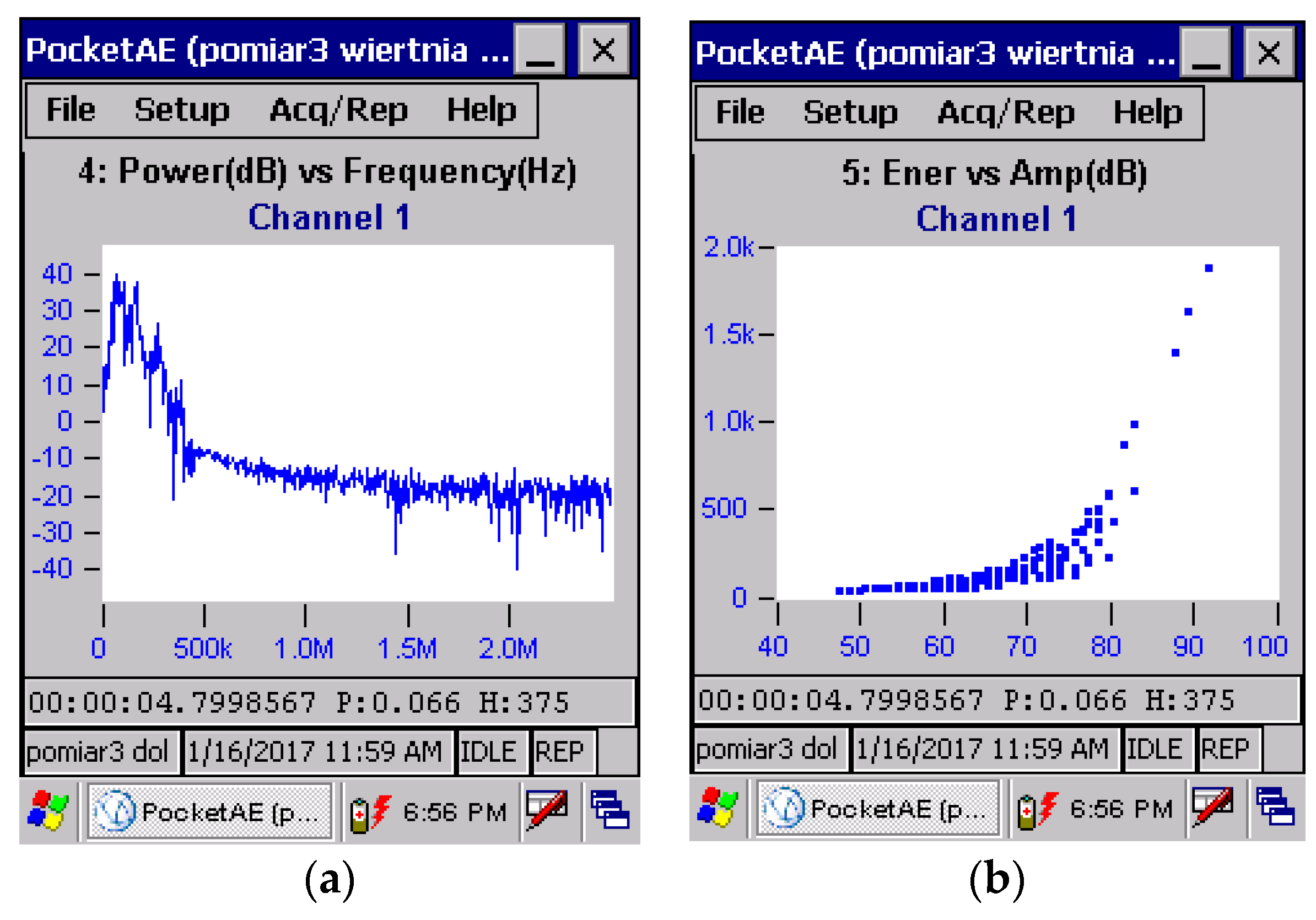

| Wear/Problem | Cause |
|---|---|
| 1. Erosion | It is the most frequent cause of valve wear. If a metal or oblique elastomer part of a valve does not evenly stick to the seat, a gap will be formed. During pump operation, when the valve is in the closed position, the mud will be flowing out through the gap. Such leakage depends on the size of the gap, pumping pressure and temperature. The flowing liquid causes erosion that enlarges the gap by grooving it, a process in which gradually particles of the material are torn away from the valve. In the longer term, the gap will substantially grow on the valve. The valve degradation will continue until a point where the gap gets large enough to make the valve visibly leak. This phenomenon is usually caused by non-axial setting of the seat (or a new valve head and old seat). However, it may be a consequence of previous abrasive wear, occurring when solid particles from the mud (e.g., sand) got into areas of friction. |
| 2. Abrasive wear | Abrasive wear is a direct characteristic associated with hard contaminants in the pumped liquid causing material loss in the surface layer through micro-cutting, scratching or ridging. Common abrasive materials are sands, quartz, iron filings, and chemical additives added to the drilling fluid. Valve components are heat treated to increase their abrasion resistance, but this does not eliminate the problem entirely. Impurities are disintegrated by the metal part of the valve creating sharp fragments that tend to settle in elastomeric inserts, initiating the formation of microfractures. In time the insert surface wears out much faster than the remaining part of the valve, resulting in its total damage excluding continued operation of the pump. |
| 3. Corrosion | The phenomenon of instant chemical corrosion of pure metal occurs at the microscopic level. As the valve is affected by mud flowing under pressure, the valve and seat faces are washed out every time again to the pure metal. During the alternate cycles of rusting and washing out, microscopic cavities start to appear on the valve face surface. After a considerable period of pump running, these ‘micro-losses’ become more and more visible. At this stage, sharp edges associated with material degradation begin to destroy the whole valve surface. After continued operation the valve will be damaged so that only a small surface of the working unit will have contact. How long it takes to destroy a valve depends primarily on the type of drilling fluid, pump capacity and working pressure. Corrosive pitting occurs most frequently in places where the insert contacts the valve seat. In some cases, in order to extend the life and resistance to pitting corrosion of the elements under consideration, chrome plating or electroless nickel plating methods are used |
| 4. Chemicals | Some chemicals and chemical compounds can cause gradual damage and degradation of the valve. As a result, the elastomer part of the valve is subject to crushing and gradually disintegrates. If during the dismantling of a valve its elastomer insert has a smell of a solvent or hydrocarbon, it is a sign of its degradation. In this case, the insert should be immediately replaced (even if the external signs of damage are not observed). |
| 5. Temperature of pumped liquid | As the temperature of the pumped liquid rises, physical properties of elastomers decrease. |
| 6. Type of the fluid base | Depending on the drilling fluid base liquid (usually oil or water), the components of mud pump sustain wear at a varying rate. This is closely related with other parameters listed as causes of damage to these components. |
© 2020 by the authors. Licensee MDPI, Basel, Switzerland. This article is an open access article distributed under the terms and conditions of the Creative Commons Attribution (CC BY) license (http://creativecommons.org/licenses/by/4.0/).
Share and Cite
Bejger, A.; Piasecki, T. The Use of Acoustic Emission Elastic Waves for Diagnosing High Pressure Mud Pumps Used on Drilling Rigs. Energies 2020, 13, 1138. https://doi.org/10.3390/en13051138
Bejger A, Piasecki T. The Use of Acoustic Emission Elastic Waves for Diagnosing High Pressure Mud Pumps Used on Drilling Rigs. Energies. 2020; 13(5):1138. https://doi.org/10.3390/en13051138
Chicago/Turabian StyleBejger, Artur, and Tomasz Piasecki. 2020. "The Use of Acoustic Emission Elastic Waves for Diagnosing High Pressure Mud Pumps Used on Drilling Rigs" Energies 13, no. 5: 1138. https://doi.org/10.3390/en13051138
APA StyleBejger, A., & Piasecki, T. (2020). The Use of Acoustic Emission Elastic Waves for Diagnosing High Pressure Mud Pumps Used on Drilling Rigs. Energies, 13(5), 1138. https://doi.org/10.3390/en13051138










